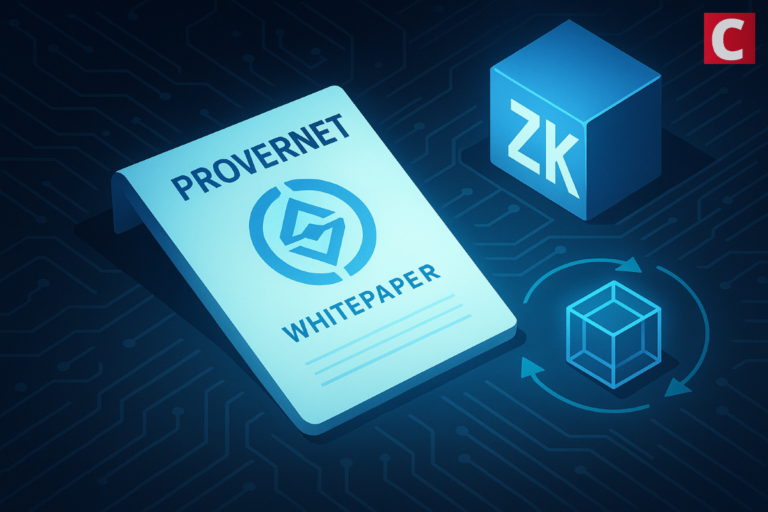The protocol uses TODA auction mechanism to match heterogeneous proof workloads with specialized provers and introduces BREV token for payments and staking.
Brevis, a zero-knowledge verifiable computing platform, released the ProverNet whitepaper on Nov. 17, introducing a decentralized marketplace for proof generation that uses a Truthful Online Double Auction mechanism to match diverse proving workloads with specialized hardware operators.
ProverNet coordinates proof generation through continuous auction rounds where requesters submit jobs with requirements and provers bid to execute them, according to the whitepaper.
The system supports zkVM execution and recursive aggregation. It also handles historical data attestations. Price discovery happens through the TODA mechanism, which evaluates cost and latency targets when matching jobs to provers.
The protocol has processed more than 250 million production proofs, Brevis announced on X. Integration partners include PancakeSwap CAKE $2.32 24h volatility: 1.9% Market cap: $787.46 M Vol. 24h: $101.35 M and Linea.
PancakeSwap uses Brevis-powered hooks for volume-based fee discounts. Linea ran a 1 billion LINEA token distribution program using the platform’s proving infrastructure.
Today we're releasing the Brevis ProverNet whitepaper.
The first decentralized marketplace for ZK proof generation, built from our experience after 250M+ production proofs across PancakeSwap, Uniswap, Euler, Linea, MetaMask, and so much more.
Read the whitepaper here:… pic.twitter.com/agwld3f4la
— Brevis (@brevis_zk) November 17, 2025
TODA Mechanism and Technical Architecture
TODA handles heterogeneous proof workloads by treating different proof types as distinct auction categories, according to the blog post.
The mechanism decomposes complex proving jobs into sub-tasks that different provers can handle collaboratively.
The system guarantees truthfulness through incentive-compatible bidding. It maintains budget balance where fees cover payouts. Provers and requesters both avoid forced losses through individual rationality guarantees.
Requesters specify their requirements for each job. Provers advertise capabilities and costs. The auction solver computes optimal allocations each round.
BREV Token Utility and Launch Timeline
BREV functions as the payment medium for proving and settlement fees within ProverNet. Provers must stake BREV or receive delegated stake to participate in the network and earn proving jobs. The token also serves as the governance mechanism for protocol parameters.
Brevis plans to launch a beta mainnet soon using a simplified version of the TODA auction without staking. Full staking functionality will be enabled at mainnet launch.
Brevis’s Pico Prism achieved 99.6% of Ethereum ETH $3 083 24h volatility: 0.9% Market cap: $372.08 B Vol. 24h: $36.89 B blocks proven under 12 seconds and 96.8% under 10 seconds on a 64-GPU cluster, according to whitepaper performance tests.
The protocol targets applications requiring fast proof generation for DEX hooks and periodic reward distributions. It also serves cross-chain attestations.
Other ZK infrastructure developments include Zama’s acquisition of KKRT Labs for ZK rollup development and Starknet’s Bitcoin BTC $93 384 24h volatility: 1.5% Market cap: $1.86 T Vol. 24h: $87.48 B bridge using ZK verification.
Competitive Landscape
Other decentralized ZK proof marketplaces include Nil Foundation’s Proof Market, which launched in January 2023 for zkRollups and bridges.
Succinct launched its Prover Network in August 2025 using the SP1 zkVM. Boundless launched a universal ZK protocol marketplace on Base in September 2025.
DeFi total value locked reached $135.28 billion as of November 2025, with analysts noting signs of market expansion.
next